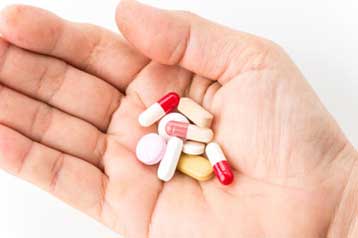Fertility treatments for women
Once a woman is diagnosed with infertility, the overall likelihood for successful treatment is 50%.1Whether a treatment is successful depends on the underlying cause of the problem, the woman's age, history of previous pregnancies, and how long she has had infertility issues.
Fertility treatments are most likely to benefit women whose infertility is due to problems with ovulation. Treatment is least likely to benefit infertility caused by damage to the fallopian tubes or severe endometriosis.1
The first step of treating infertility in many cases is to treat the underlying cause of infertility. For example, in cases where thyroid disease causes hormone imbalances, medication for thyroid disease may be able to restore fertility.
Fertility treatments for women fall into the following categories:
Medication Treatments for Infertility in Women
The most common medications used to treat infertility help stimulate ovulation. Examples of these types of medications include2:
Clomiphene or Clomiphene Citrate
Clomiphene is a medication patients take by mouth (orally). It causes the body to make more of the hormones that cause the eggs to mature in the ovaries.2 If a woman does not become pregnant after taking clomiphene for six menstrual cycles, a health care provider may prescribe other fertility treatments.
- Patients take clomiphene on days 3 to 5 of the menstrual cycle.
- Clomiphene causes ovulation to occur in 80% of women treated. About half of those who ovulate are able to achieve a pregnancy or live birth.2
- Use of clomiphene increases the risk of having a multiple pregnancy. There is a 10% chance of twins, but having triplets or more is rare—less than 1% of cases.2
Gonadotropins and Human Chorionic Gonadotropin (hCG)
Gonadotropins are hormones that are injected in a woman to directly stimulate eggs to grow in the ovaries, leading to ovulation.2 Health care providers normally prescribe gonadotropins when a woman does not respond to clomiphene or to stimulate follicle growth for ART.
- Gonadotropins are injected starting on day 2 or day 3 of the menstrual cycle for 7 to 12 days.
- While a woman is treated with gonadotropins, a health care provider uses transvaginal ultrasound to monitor the size of the developing eggs, which grow inside tiny sacs called follicles (pronounced FOL-i-kuhls). The health care providers also draw blood frequently to check the ovarian production of estrogen.
- The chance of a multiple birth is higher with gonadotropins than with clomiphene, and 30% of women who conceive a pregnancy with this medication have multiple births.2 About two-thirds of multiple births are twins. Triplets or larger multiple births account for the remaining third.
hCG is a hormone similar to leutenizing hormone that can be used to trigger release of the egg after the follicles have developed.
Bromocriptine or Cabergoline
Bromocriptine and cabergoline are pills taken orally to treat abnormally high levels of the hormone prolactin, which can stop ovulation.2 Certain medications, kidney disease, and thyroid disease can cause high levels of prolactin.
- Bromocriptine or cabergoline allow 90% of women to have normal prolactin levels.1
- Once prolactin levels become normal, 85% of women using bromocriptine or cabergoline ovulate.1
Surgical Treatments for Infertility in Women
If disease of the fallopian tubes is the cause of infertility, surgery can repair the tubes or remove blockages in the tubes. Success rates of these types of surgery, however, are low. These surgeries involving the fallopian tubes also increase the risk of ectopic (pronounced ek-TOP-ik) pregnancy, which is a pregnancy that occurs outside of the uterus.1 Ectopic pregnancies are also called "tubal pregnancies" because they most often occur in a fallopian tube.3
Surgery to remove patches of endometriosis has been found to double the chances for pregnancy. Surgery can also remove uterine fibroids, polyps, or scarring, which can affect fertility.
- Jose-Miller, A. B., Boyden, J. W., & Frey, K. A. (2007). Infertility. American Family Physician, 75, 849–856. [top]
- American Society for Reproductive Medicine. (2012). Medications for inducing ovulation. Retrieved June 11, 2012, from http://www.asrm.org/Medications_for_Inducing_Ovulation/ [top]
- American Pregnancy Association. (2011, November). Ectopic Pregnancy. Retrieved July 19, 2012, fromhttp://www.americanpregnancy.org/pregnancycomplications/ectopicpregnancy.html [top]
Source
Fertility Treatments for Women
Eunice Kennedy Shriver National Institute of
Child Health and Human Development (NICHD)
GeoSalud, August 11, 2013






